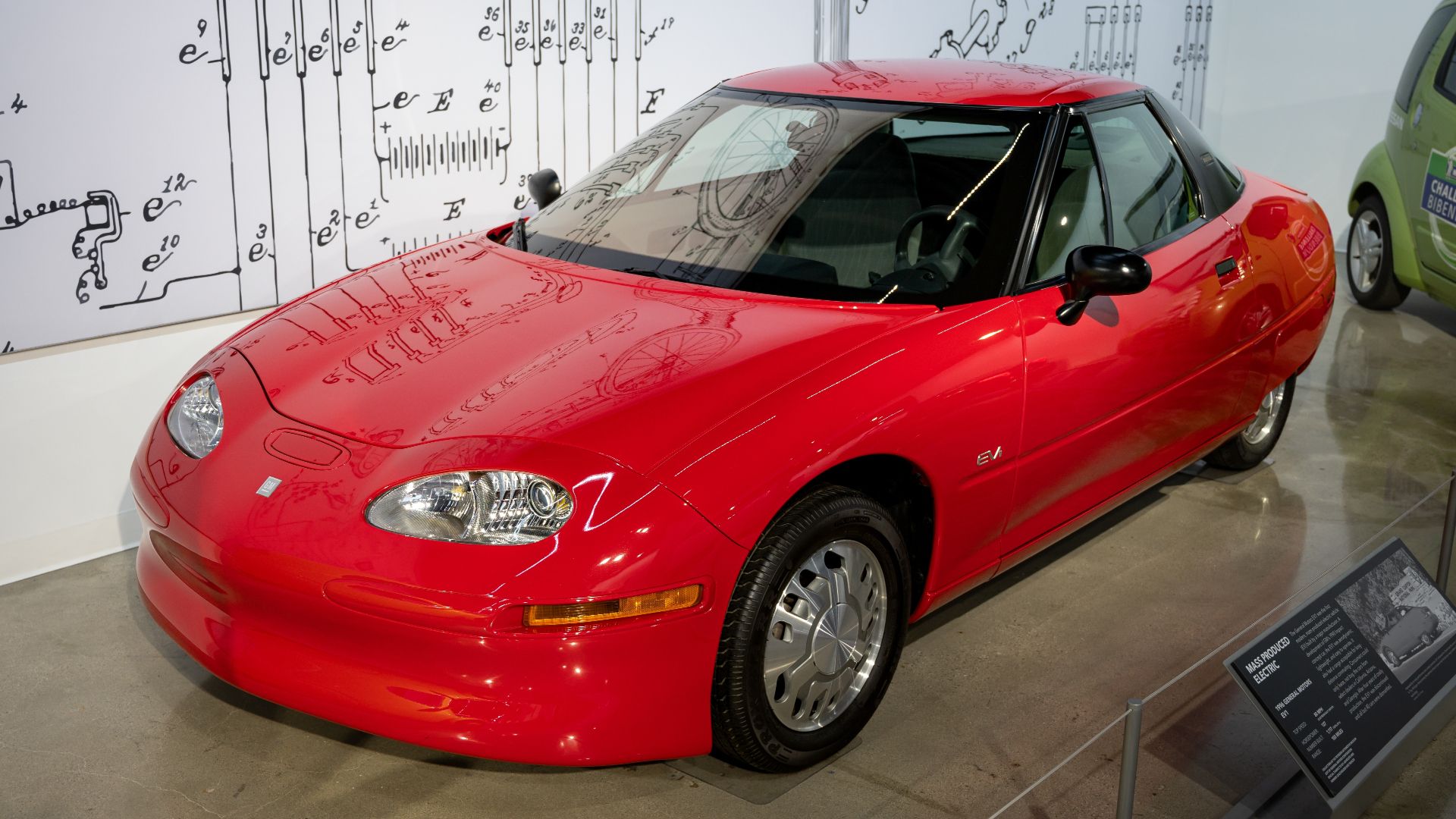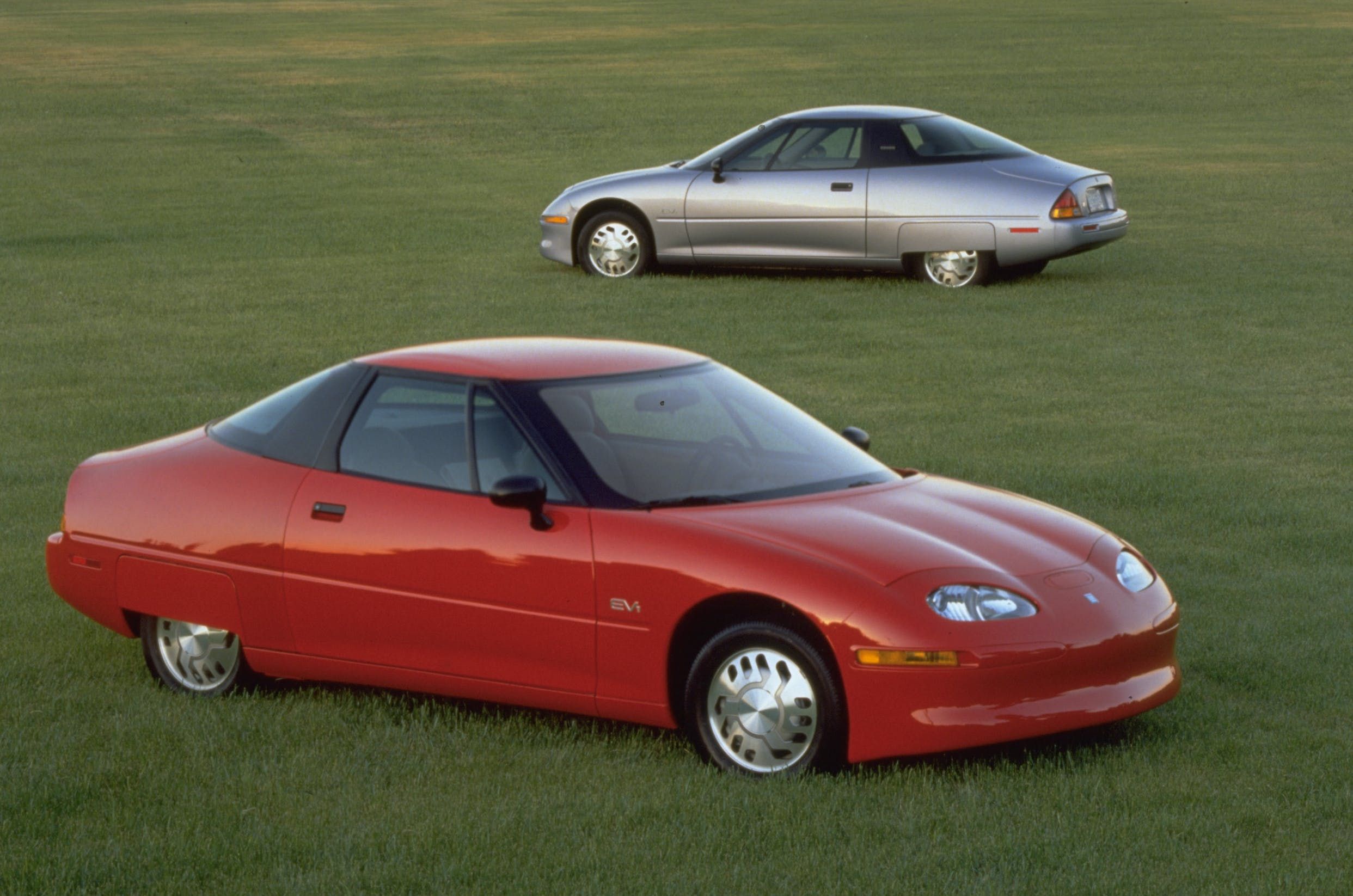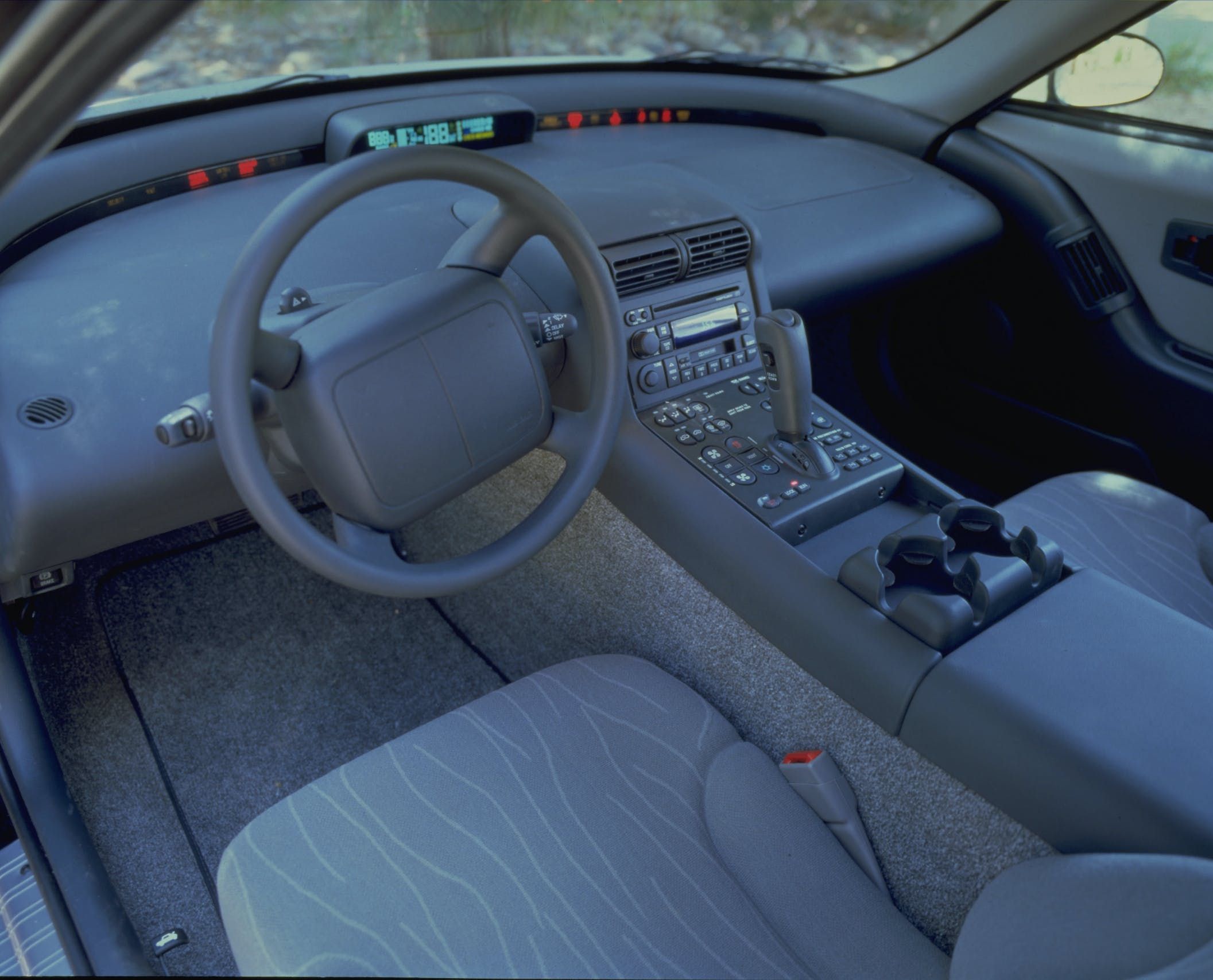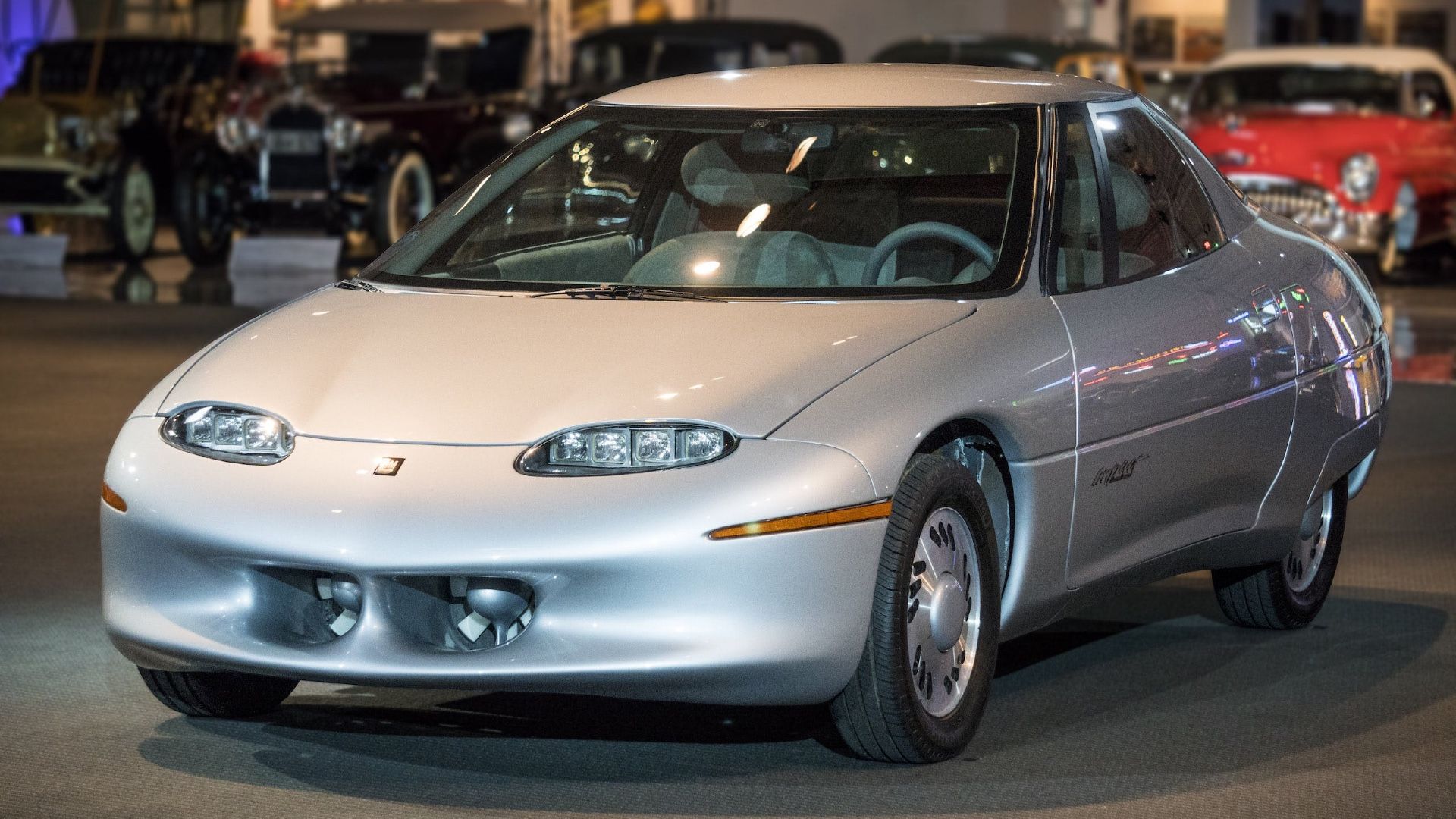The year was 1996. Elon Musk was still a student at Stanford University and if you mentioned the name Tesla, people would assume that you were referring to Nikola Tesla, the Serbian inventor. But General Motors was on the cusp of unleashing something huge – its new EV1. The EV1 was the first purpose-built electric vehicle of the modern era and also the first to be first mass-produced by a major automaker. The impetus for GM to make such a bold move was twofold. First, the brand’s Impact electric concept car was viewed as a smashing success when it was unveiled at the 1990 Los Angeles Auto Show. The final product that would become the EV1 drew heavily from the Impact’s design, which itself was based on the Sunraycer, a joint collaboration between General Motors, AeroVironment, and Hughes Aircraft, which won the first World Solar Challenge race in 1987.
The second motivating factor that led to EV1 production was when the California Air Resources Board (CARB) passed a mandate that required each of the seven major automakers selling cars in the United States to make two-percent of their fleet emission-free by 1998, five-percent by 2001, and 10-percent by 2003. This move was intended to improve California's poor air quality at the time and automakers that chose not to comply would be forbidden from marketing or selling any of their vehicles in the Golden State.
You Couldn't Actually Buy An EV1
The first-generation EV1s were powered by lead-acid batteries and had a stated range of 70-100 miles. For the 1999 model year, a much-improved second-generation version of the EV1 was released. Between a new nickel-metal hydride battery and drastic weight reduction, the vehicle’s range increased to 100 - 140 miles. While those figures are lackluster by modern standards, the EV1 was only ever intended to be a local commuter car, not a long-distance hauler. During a 1997 MotorTrend road test, the EV1 accelerated from 0 to 60 MPH in a very respectable 7.7 seconds.
The EV1 had a suggested retail price of $34,000, which is equivalent to $63,418 in today’s dollars. But the retail price was moot because the cars were only available to lease, with the option to purchase specifically forbidden by the leasing contract. Certain specially trained Saturn dealerships were tasked with the duties of leasing and servicing the EV1. The lease payments ranged from $399 to $549 per month and only residents of Southern California and metro-Phoenix, Arizona, were eligible to participate in the leases. Later on, availability would be expanded to Sacramento, California, and Atlanta, Georgia.
The EV1 Failed To Catch On
Over the entire 1996-1999 production run, a total of 1,117 EV1s were produced, which was a far cry from the 5,000 to 20,000 cars per year that analysts had predicted. There were several reasons why the EV1 ultimately was not successful. It was both expensive and a small 2-seater, which made it impractical for families. These inherent disadvantages were compounded by competing technology from gasoline-electric hybrids such as Toyota’s juggernaut, the Prius, which charged its own batteries while driving and wasn’t reliant on a nearly nonexistent network of charging stations away from home.
Lastly, other automakers like Nissan, Honda, Ford, and Chrysler were all unsuccessful at meeting California’s unrealistic zero-emissions mandate and unceremoniously stopped trying. Following numerous lawsuits from auto manufacturers, CARB had no alternative but to relax its overly aggressive requirements to incorporate technology that was nowhere near market-ready. Eventually, the mandate was modified with a reduced requirement of at least 250 hydrogen fuel cell or battery-powered vehicles sold per manufacturer by the year 2008.
GM Crushed Most of the EV1s
Support for the EV1 program was withdrawn beginning in 2002, three years after production had already ceased. GM announced that they would be removing all EV1s from the road and started collecting the outstanding production vehicles as their lease terms expired. Even though the EV1 wasn’t exactly a blockbuster success, those who leased them were generally quite fond of the quirky electric car and were reluctant to surrender them, fearful that GM would destroy the cars.
Several dozen drivers were passionate enough to write letters and send deposit checks to GM, begging for lease extensions and promising to absolve the automaker from responsibility for any repair costs. But it was to no avail. GM refused the offers, returned the funds, and destroyed most of the EV1s by crushing them. According to Jill Banaszynski, manager of the EV1 donation program, approximately 40 of the vehicles were spared crushing to be donated to universities and museums, including the Smithsonian Institute in Washington, DC.
The Drivers Had An Actual Funeral For Their Cars
In the ensuing years, the public lobbed a lot of blame at GM, claiming that the EV1 program was never taken seriously, and that GM wanted it to fail. This culminated in the documentary Who Killed the Electric Car? that painted GM as a heartless villain. In reality, GM spent over a billion dollars to develop and produce a vehicle that was simply ahead of its time. And as far as not extending the leases? GM simply did not care to continue servicing or maintaining an inventory of spare parts for such a low number of cars. Furthermore, they were rightfully wary of the liability of independent mechanics working on the vehicles because of their powerful 312-volt batteries.
On July 24, 2003, at the Hollywood Forever Cemetery in Los Angeles, a group of EV1 lessees said their goodbyes to the futuristic, battery-powered pioneer in an actual funeral procession, complete with a hearse and live bagpipe music playing while devoted EV1 drivers took a literal last ride in the cars they loved. But the death of the EV1 was not in vain. The little car introduced technologies and taught lessons that paved the way for the plethora of practical electric vehicles that populate the market today... most with four or more seats.




